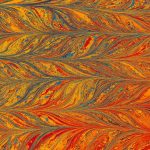Softness, sought after by many, is a sensation that stirs the senses and soothes the soul.
But what truly holds the title of the softest substance on Earth?
As I ponder this question, my mind drifts towards the delicate touch of a newborn's skin, the gentle caress of a feather, the luxurious embrace of cashmere.
Join me as we unravel the mystery and discover the answer that will surprise and delight even the most discerning connoisseurs of comfort.
Table of Contents
Key Takeaways
- Cashmere fibers, softer than most fabrics, offer unparalleled comfort and elegance.
- Velvet, known for plushness, adds sophistication and luxury to designs.
- Down feathers provide excellent insulation and breathability for ultimate comfort.
- Delicate Baby's Breath flowers symbolize fragility and elegance in nature's soft beauty.
The Science of Softness
Exploring the science of softness reveals the intricate ways in which materials interact with our sense of touch. When we touch an object, our tactile perception is influenced by the arrangement of microscopic fibers on its surface. These tiny fibers play a vital role in determining the softness of a material.
Microscopic fibers are like tiny threads that form the structure of a material. When these fibers are densely packed together, they create a surface that feels smooth and soft to the touch. On the other hand, materials with loosely arranged fibers may feel rough or coarse. Understanding the properties of these fibers allows us to engineer materials with varying degrees of softness.
Our tactile perception of softness isn't only influenced by the physical structure of materials but also by our brain's interpretation of the signals sent by our nerves. This complex interplay between materials and our sense of touch showcases the fascinating science behind what makes something feel soft.
Exploring Down Feathers
Down feathers, known for their exceptional softness and insulating properties, play a pivotal role in various products and industries. Personally, I find the world of down feathers fascinating, especially how they contribute to the comfort we experience daily.
- Versatile Usage: Down feathers are commonly used in creating luxurious down pillows, providing a cloud-like softness that enhances our sleep quality.
- Excellent Insulation: These feathers are also utilized in crafting cozy blankets, offering exceptional warmth without the heaviness of other materials.
- Natural Breathability: One of the remarkable aspects of down feathers is their ability to regulate temperature, making them ideal for creating bedding that keeps us comfortable throughout the night.
Understanding the intricacies of down feathers reveals why they're highly sought after for products like down pillows and cozy blankets. The next time you snuggle up under a soft blanket or rest your head on a plush pillow, take a moment to appreciate the incredible softness that down feathers bring into our lives.
Luxurious Cashmere Fibers
Wrapped in luxurious cashmere fibers, one can't help but feel a sense of unparalleled comfort and elegance. The cashmere comfort and silk smoothness against the skin create a feeling of plush perfection that is unmatched. This cozy cashmere is not just a fabric; it's an experience of indulgence and luxury. The fine fibers of cashmere come from the soft undercoat of cashmere goats, making it one of the most sought-after materials in the world.
To truly appreciate the exquisite nature of cashmere, let's compare it to other common fabrics:
| Cashmere | Other Fabrics |
|---|---|
| Cashmere comfort | Ordinary softness |
| Silk smoothness | Rough textures |
| Plush perfection | Regular coziness |
The table highlights the unique qualities that set cashmere apart. Its unparalleled softness, warmth, and lightweight feel make it a staple in high-end fashion and luxury items. Embracing cashmere is not just about wearing a garment; it's about enveloping oneself in a world of opulence and refinement.
Velvet: A Soft Textile
Comparing the luxurious comfort of cashmere to other fabrics magnifies the allure of velvet, a soft textile renowned for its plushness and tactile appeal. Velvet's velvety touch is unmatched in the domain of fabrics, making it a popular choice for those seeking both comfort and elegance. Here are a few key points to understand the significance of velvet:
- Velvet upholstery adds a touch of sophistication and luxury to any living space, transforming ordinary furniture into pieces of art.
- Velvet fashion trends have seen a resurgence in recent years, with designers incorporating this sumptuous fabric into their collections for its timeless appeal and soft feel against the skin.
- The versatility of velvet allows it to be used in various ways, from elegant evening gowns to chic accessories, proving its adaptability and enduring popularity in the world of fashion and interior design.
The Delicate Touch of Baby's Breath
With a delicate touch that rivals the softness of a whisper, Baby's Breath adds a subtle elegance to any floral arrangement. Its gentle caress upon the petals of surrounding flowers evokes a sense of delicate innocence, enhancing the overall beauty of the bouquet. As I delicately place these tiny white blooms among the vibrant colors of roses and tulips, I can't help but marvel at their understated charm.
The fine, airy nature of Baby's Breath gives it a unique quality that's unparalleled in the world of blossoms. Each stem seems to carry a whisper of tenderness, a reminder of the fragility and beauty of life itself. When paired with other flowers, its presence isn't overpowering but rather a harmonious addition that brings a sense of lightness and grace to the arrangement.
In the domain of floral design, the delicate touch of Baby's Breath is a true masterpiece, a representation of nature's ability to create beauty with the most understated of elements.
Frequently Asked Questions
What Are the Benefits of Using Soft Materials in Everyday Life?
Using soft materials in everyday life enhances comfort and promotes relaxation. From comfortable bedding for restful sleep to plush toys for soothing play, cozy blankets and smooth fabrics contribute to a cozy and calming environment.
How Do Different Textures Affect the Softness of a Material?
When comparing fabrics, factors like weave, fiber type, and finish greatly influence softness. Our sensory perception of texture, combined with factors like thread count and surface treatments, plays an important role in the tactile experience.
Are There Any Environmental Impacts Associated With Producing Soft Textiles?
Producing soft textiles can have environmental impacts. To promote environmental sustainability, I prioritize ethical sourcing. By choosing eco-friendly materials and supporting fair labor practices, we can create soft products that are both luxurious and responsible.
Can Softness Be Measured Objectively, or Is It Subjective to Individual Preferences?
Softness perception varies across individuals due to touch sensitivity and cultural differences. Objectively measuring softness can be challenging as personal preferences play a significant role. Factors like texture, fabric type, and even emotional connections influence our perception.
What Advancements Have Been Made in the Textile Industry to Create Even Softer Materials?
In fabric technology, comfort standards are redefined with softness ratings. Innovative fibers like micro modal and bamboo viscose enhance the tactile experience. Advancements in the textile industry aim to create materials that surpass traditional notions of softness.
- Is Joann Fabrics Affected by China Tariffs? Exploring Impact - June 20, 2025
- Is Cotton Fabric From China Safe? Understanding Quality and Safety - June 20, 2025
- How to Sell Fabric Patterns to China: A Business Guide - June 20, 2025




